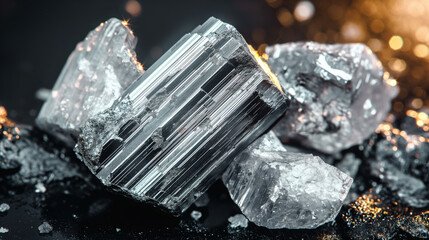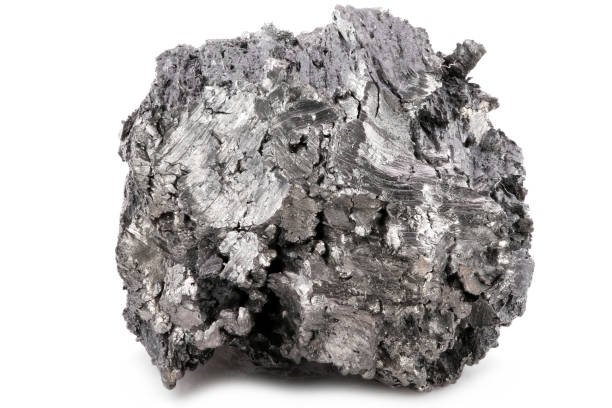What Makes Rare Earth Elements So Valuable in Luxury Car Manufacturing?
Rare earth elements, a set of seventeen metallic elements on the periodic table, are known for their unique electronic, magnetic, and optical properties. These elements include the lanthanides, yttrium, and scandium. While they are relatively abundant in the Earth’s crust, their extraction and refinement can be challenging and resource-intensive, making them highly valuable. Unlike common metals and minerals, rare earth elements exhibit extraordinary capabilities that are indispensable in various high-tech applications, from smartphone components to renewable energy technologies.
How Do Rare Earth Elements Enhance the Performance of High-End Cars?
The automotive industry has increasingly turned to rare earth elements to enhance the performance and appeal of luxury cars. Their inclusion is not merely a matter of aesthetics but also functional superiority. For instance, elements like neodymium are critical in manufacturing strong, yet lightweight, permanent magnets used in electric motors. Cerium and lanthanum are used in catalytic converters, which help reduce emissions, while terbium and dysprosium improve the efficiency and heat-resistance of electric vehicle batteries.
What Is the Significance of Rare Earth Elements in Electric Vehicle Technology?
The use of these rare earth elements in luxury cars goes beyond technical enhancements. These elements contribute to a car’s exclusive allure, appealing to discerning buyers seeking unparalleled performance and luxury. The presence of rare earth elements can influence everything from the clarity of the audio system to the precision of advanced driver-assistance systems. Thus, their application underscores the intersection of cutting-edge technology and opulence, making these vehicles not only ride smoothly but also resonate with luxury.
Must educate yourself on the difference between Regular Silver vs. 925 Sterling Silver
How Are Rare Earth Elements Used to Create Luxurious Car Features?
The trend of incorporating rare earth elements in high-end automobiles mirrors the broader demand for these elements across various industries. As automotive technology advances and the demand for sustainable, efficient, and luxurious vehicles grows, the integration of rare earth elements into luxury car manufacturing is likely to accelerate, setting new benchmarks for performance and sophistication.
Rare Earth Elements: The Secret to High-End Automotive Performance and Luxury
In high-end automotive manufacturing, the utilization of rare earth elements significantly contributes to both performance and luxury. These elements, often sourced from limited geological reserves, bring unique properties that are paramount for the engineering precision and enhanced capabilities synonymous with the world’s most expensive cars.
Don’t miss out the Benefits of Himalayan Pink Salt
Neodymium: The Power Behind Electric Supercars
Neodymium stands out for its essential role in producing powerful magnets. These magnets are a critical component in electric motors, offering high performance with minimal weight. Electric supercars, such as those designed by Tesla, extensively use neodymium to ensure their motors deliver superior torque and efficiency.

Dysprosium: Enhancing Thermal Tolerance in High-Performance Magnets
Another vital element is Dysprosium. This metal often complements Neodymium in magnets to boost their thermal tolerance. High-performance vehicles, especially those with electric drivetrains, benefit from Dysprosium’s ability to maintain magnetic strength at elevated temperatures, ensuring reliability even under high-speed and high-stress conditions.

Terbium: Boosting Durability in Luxury Car Motors
Terbium also plays a supporting role in enhancing the durability of magnets. Its addition ensures that the motors in these luxury cars can withstand extreme conditions, a necessity for maintaining consistent performance without compromise.

Yttrium: How Does Yttrium Contribute to Sophisticated Lighting Systems in Luxury Cars?
In the sophisticated lighting systems of luxury vehicles, Yttrium finds its application. Yttrium is frequently used in phosphor coatings for LED lights, providing brighter and more efficient illumination. This yields both aesthetic appeal and functional excellence, crucial for visibility and the distinct look of high-end automobiles.

Each element – be it Neodymium, Dysprosium, Terbium, or Yttrium – is meticulously selected and integrated into the design, enhancing various aspects from powertrain efficiency to lighting elegance. These rare earth elements ensure that the most expensive cars are not just vehicles, but finely-tuned masterpieces of modern engineering.
Top 10 Foods High in Magnesium
Rare Earth Elements: The Key to Unlocking Luxury Car Innovation
Neodymium, Dysprosium, and Lanthanum: The Rare Earth Elements Powering Electric Motors
Integrating rare earth elements into luxury cars is a complex and sophisticated process, involving advanced technologies aimed at enhancing performance, durability, and aesthetic appeal. At the heart of this integration are rare earth elements such as neodymium, dysprosium, and lanthanum, which are crucial for creating highly efficient electric motors. These motors leverage strong yet lightweight magnets that significantly improve power output and energy efficiency, translating to enhanced acceleration and extended range in electric vehicles (EVs).
Scandium Alloys: The Secret to Lightweight, High-Performance Luxury Cars
Furthermore, rare earth elements are pivotal in the development of lightweight materials, vital for manufacturing high-performance luxury cars. For instance, scandium can be alloyed with aluminum to produce materials that are not only lighter but also possess superior strength and corrosion resistance. This results in cars that are agile, more fuel-efficient, and longer-lasting. The reduced weight also means reduced environmental impact, as lighter cars generally consume less energy.
What Is the Significance of Europium and Yttrium in Luxury Car Electronic Systems?
In addition to performance and durability, rare earth elements play a significant role in the aesthetic and functional aspects of luxury cars’ electronic systems. Europium and yttrium, for example, are used in the production of high-quality displays and advanced lighting systems. These elements allow for vibrant, crisp displays on dashboards and infotainment systems, as well as adaptive headlights that improve safety and visibility. The integration of rare earth elements in electronic systems extends to advanced driver-assistance systems (ADAS) and sophisticated audio systems, both crucial for a modern luxury driving experience.
Rare Earth Elements in ADAS and Audio Systems: Elevating the Luxury Driving Experience
The culmination of these technological innovations results in a driving experience that is not only luxurious but also highly efficient and sustainable. Rare earth elements are thus instrumental in pushing the boundaries of automotive technology, marking a fusion of luxury and cutting-edge science. As car manufacturers continue to explore and integrate these elements, we can expect to see even more refined and high-performing vehicles in the future.
Top Luxury Cars in the world Featuring Rare Earth Elements
In the world of luxuriest cars, certain vehicles stand out not just for their price tags, but also for their innovative incorporation of rare earth elements. These elements, while essential in many modern technologies, play a pivotal role in enhancing the performance and luxury aspects of these high-end cars. Below, we highlight some of the most expensive and luxurious cars in the world and delve into the specific rare earth elements utilized within them.
Rolls-Royce Phantom
The Rolls-Royce Phantom, retailing for approximately $450,000, is a prime example of a luxury vehicle integrating rare earth elements. The car’s advanced audio system employs neodymium-based magnets, providing superior sound quality by enhancing magnetic flux and reducing weight. This not only augments the auditory experience but also contributes to a smoother ride by minimizing unnecessary bulk.

Bugatti La Voiture Noire
Another noteworthy model is the Bugatti La Voiture Noire, with a staggering price tag of around $18.7 million. The hypercar’s electric shift mechanism prominently features dysprosium and terbium. These elements are known for their high thermal and corrosion resistance, ensuring stability and reliability even under intense operating conditions. This ensures seamless gear transitions, exemplifying the marriage of performance and luxury.

Tesla Model S Plaid
The Tesla Model S Plaid, positioned at $129,990, highlights the application of rare earth elements in electric vehicles. Its high-efficiency electric motors incorporate neodymium and praseodymium. These elements enhance the magnetic properties of the motors, leading to improved efficiency and acceleration. This utilization underscores the capability of rare earth elements to boost the effectiveness of electric propulsion systems.

Lamborghini Aventador S
Lamborghini’s Aventador S, costing around $517,000, also integrates rare earth elements, specifically in its laser headlamp technology. The incorporation of yttrium aluminum garnet (YAG) crystals elevates the headlamp’s luminosity and longevity, providing drivers with an unmatched nighttime driving experience. The increased brightness and extended lifespan are crucial for both safety and aesthetics, reinforcing Lamborghini’s commitment to amalgamating cutting-edge technology with luxury.

Mercedes-Benz S-Class
Lastly, the Mercedes-Benz S-Class, priced at $109,800, utilizes rare earth elements in its various sensors and electronic systems. Specifically, cerium oxide is employed in exhaust catalysts to reduce emissions, aligning with environmental standards without compromising on performance. This element aids in converting harmful pollutants into less harmful emissions, enhancing the vehicle’s eco-friendly profile.

These examples illustrate how rare earth elements contribute significantly to the advancements in luxury and performance within the automotive industry. By integrating these materials, manufacturers have succeeded in pushing the boundaries of what premium vehicles can offer, ultimately creating some of the most remarkable and expensive cars in existence.
The Rare Earth Element Factor The Price Tag: What Drives the Cost?
What Makes Rare Earth Elements So Essential for High-Performance Automotive Technology?
When considering the high costs of the world’s most expensive cars, numerous factors interplay to create the astronomical price tags. A primary driver is the scarcity and extraction process of rare earth elements. These elements, such as neodymium, dysprosium, and praseodymium, are essential in producing high-performance magnets, batteries, and other advanced materials crucial for automotive technology. However, extracting these rare earth elements involves complex, energy-intensive processes due to their dispersion in the earth’s crust, significantly contributing to the overall cost.
How Do the Extraction and Manufacturing Processes of Rare Earth Elements Affect Car Prices?
Incorporating these rare earth elements into car designs introduces another layer of complexity. Specialized engineering and manufacturing processes are required to integrate components made from rare earth elements seamlessly. This need for precision and the utilization of advanced manufacturing techniques, often bespoke to each model, results in higher production costs. Integrating unique elements while maintaining structural integrity, performance, and design aesthetics requires substantial resources, skilled labor, and time.
What Technological Innovations Are Made Possible by the Use of Rare Earth Elements in Luxury Cars?
Moreover, these luxurious vehicles are often at the forefront of technological innovation. Rare earth elements enable advancements in engine efficiency, enhanced electric drivetrains, and state-of-the-art infotainment systems, which contribute to a superior driving experience. The deployment of cutting-edge technologies, whether in the form of autonomous driving capabilities or advanced aerodynamics, elevates both the functionality and the desirability of these cars.
How Do Rare Earth Elements Contribute to the Prestige and Value of the World’s Most Expensive Cars?
Collectively, these factors— the scarcity of rare earth elements, the intricate design and manufacturing processes, and the embodiment of technological innovations— converge to justify the soaring prices of these luxurious vehicles. These elements, critical to the performance and prestige of the world’s most expensive cars, underscore why they command such premium prices, making them not just modes of transportation, but symbols of technological mastery and elegance.
The Dark Side of Luxury: Environmental and Ethical Concerns of Rare Earth Elements in Cars
Rare Earth Element Mining: Biodiversity Loss, Soil Erosion, and Water Contamination
The use of rare earth elements in luxury car production raises significant environmental and ethical questions. The mining and extraction processes required to obtain these materials have substantial impacts on ecosystems, often leading to biodiversity loss, soil erosion, and water contamination. For instance, the extraction of elements like neodymium and dysprosium, essential for advanced automotive technologies, generates large amounts of waste and toxic by-products, affecting surrounding habitats and local communities.
The True Cost of Neodymium and Dysprosium: Toxic By-Products and Waste Generation
Beyond environmental damage, the ethical implications of sourcing rare earth elements are a growing concern. In many cases, these minerals are extracted in regions with weak labor regulations, leading to poor working conditions and exploitation. The lack of supply chain transparency exacerbates these issues, making it difficult for consumers to ensure that the materials used in their vehicles are ethically sourced.
Innovations in Rare Earth Element Recycling for Sustainable Luxury Car Production
Recognizing these challenges, many car manufacturers are beginning to adopt more sustainable and ethical practices. Efforts are underway to enhance the recyclability of rare earth elements, reducing the need for continued mining. Advanced recycling techniques are being developed to recover these valuable materials from end-of-life vehicles and electronic waste, significantly lowering the ecological footprint.
Can Luxury Car Manufacturing Be Balanced with Environmental and Social Responsibility?
Moreover, some companies are investing in research and development to find alternative materials and improve existing technologies to reduce dependency on rare earth elements. Initiatives aimed at cleaner production methods and stricter supply chain verification processes are also being implemented to ensure that the entire lifecycle of these cars is more sustainable and transparent.
While the integration of rare earth elements in cars leads to innovations in performance and luxury, it is crucial that these advancements do not come at the expense of our planet and its people. The industry’s ongoing efforts to address these concerns offer hope for a more balanced approach to luxury car manufacturing.
Future Trends in Luxury Cars and Rare Earth Elements
Rare Earth Elements in Electric Motors: Enhancing Performance and Range
As the automotive industry continues to evolve, the integration of rare earth elements in luxury vehicles is poised to become even more significant. Emerging technologies and innovations are expected to drive this transformation, particularly in the realm of electric vehicles (EVs) and autonomous driving.
How Rare Earth Elements Are Revolutionizing Autonomous Driving Systems
One of the most prominent trends is the advancement of electric vehicles (EVs). Rare earth elements like neodymium, dysprosium, and terbium play a critical role in the manufacturing of high-performance magnets used in electric motors. As demand for EVs continues to surge, manufacturers are investing heavily in research to enhance the efficiency and performance of these motors. This not only contributes to a smoother and quieter driving experience but also extends the vehicle’s range—a key consideration for luxury car consumers.
How Do Lidar Sensors Utilize Rare Earth Elements for Autonomous Driving?
Autonomous driving technology is another burgeoning field where rare earth elements are proving vital. Lidar sensors, essential for the accurate detection and navigation in self-driving cars, rely on elements such as yttrium and lanthanum. The integration of sophisticated autonomous systems is set to redefine luxury, combining cutting-edge technology with unparalleled convenience and safety. As these systems become more refined, consumer preferences are expected to shift towards vehicles that offer the perfect blend of advanced technology and opulent comfort.
The Intersection of Luxury and Sustainability: Rare Earth Elements in Automotive Innovation
Moreover, innovations in sustainability are rapidly gaining traction within the luxury car market. Traditional perceptions of luxury are being redefined to include not just opulence but also environmental consciousness. Rare earth elements are crucial in developing more efficient energy storage systems, such as lithium-ion batteries. These advancements promise to reduce environmental impact while maintaining the high standards expected of luxury vehicles.
Conclusion
The future of luxury cars is inextricably linked to the innovative use of rare earth elements. From enhancing the performance of electric motors and autonomous systems to supporting sustainable practices, these elements are set to shape the next generation of automotive excellence, significantly influencing the preferences of discerning consumers.

